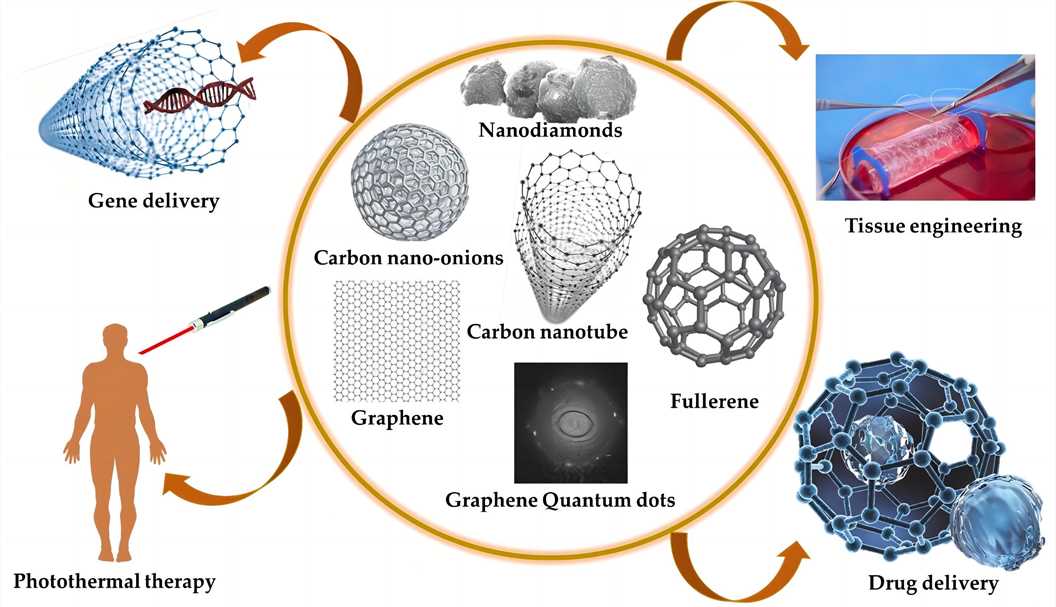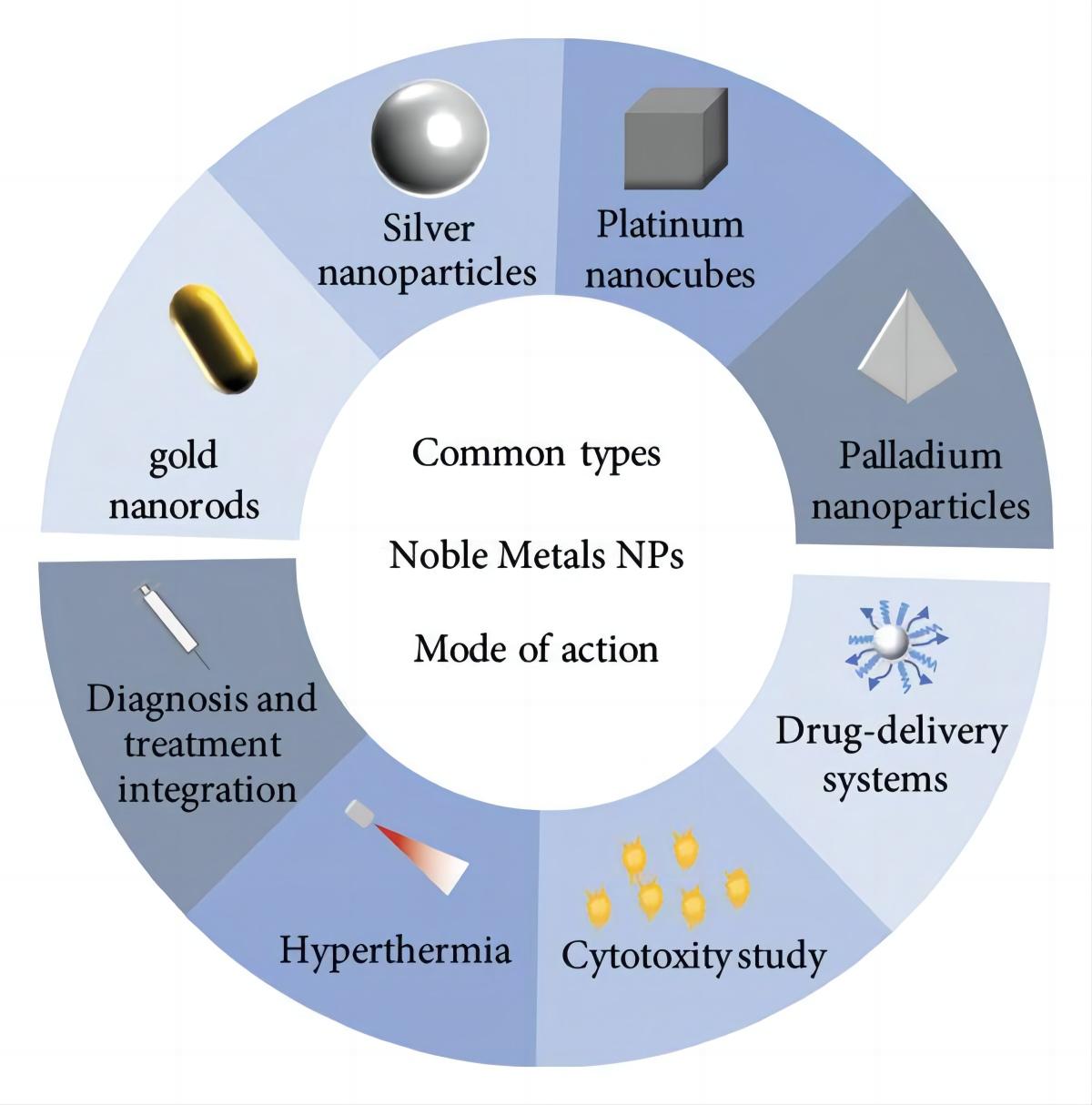Introduction of Electrochemistry-based Nanomaterials
Nanomaterials are chemical materials with particle sizes between 1 to 100 nanometres in at least one dimension. Nanomaterials with different sizes, shapes, chemical components have been applied for the development of different kinds of biosensors. Highly sensitive and precise nanomaterials based biosensors have paved the way for the early-stage detection and diagnosis of disease-related biomarkers. Especially, the introduction of nanomaterials with electrochemical properties has profoundly revolutionized the sensitivity and diversity of biosensors. The chemical composition, surface texture, crystal structure perfection, crystallographic axis orientation, etc. on the nanomaterials-derived electrodes control electron transport mechanism, which is used for the in vivo and in vitro measurements to detect diseases and to monitor the clinical markers of patients at different levels.
Types of Electrochemistry-based nanomaterials
- Carbon-based nanomaterials
Carbon nanomaterials have several unique advantages such as a high surface-to-volume ratio, high electrical conductivity, chemical stability, biocompatibility and robust mechanical strength, enabling them to become a frequently used sensor. In the design of efficient electrochemical sensors, the morphologies of carbon-based nanomaterials create an additional key factor that enables their functionality and stable operation. All of these have an impact on their electron transport dynamics and increase sensitivity, selectivity and stable response. Carbon nanomaterials based sensors usually have higher sensitivity and lower detection limits than traditional sensors. Researchers established a label-free, highly reproducible, sensitive, and selective biosensor based on anti-apolipoprotein B 100 (AAB) functionalized carbon nanomaterials and NiO as nanocomposites for the detection of low density lipoprotein (LDL) molecules. This biosensor showed a low detection limit of 5 mg dL-1 concentration with a wide range of 0-130 mg/dL-1.
 Fig.1 Overview of carbon-based nanomaterials.1, 3
Fig.1 Overview of carbon-based nanomaterials.1, 3
- Noble metal nanoparticles
Noble metal nanoparticles such as gold (Au), platinum (Pt), silver (Ag), palladium (Pd) have primarily engaged in the development of electrochemical sensors for in vitro biomedical analyses owing to their unique size and shape-dependent optoelectronic properties. Electrochemical sensors based on noble metal nanoparticles have a great potential to increase sensitivity and selectivity by tuning signal amplifications. Researchers established AuNPs/MMPF-6(Fe)-based electrochemical sensor hydroxylamine sensor through the immobilization of gold nanoparticles on metal-metalloporphyrin frameworks. The sensor showed a remarkably high electrocatalytic response to the oxidation of hydroxylamine because of the synergic effect of the gold metal nanoparticles and metal-metalloporphyrin matrix. Besides, this sensor showed a couple of linear dynamic ranges, 0.01-1.0 and 1.0-20.0 μmol L−1 and the detection limit was as low as 4.0 nM (S/N = 3).
 Fig.2 Applications of noble metal nanoparticles.2, 3
Fig.2 Applications of noble metal nanoparticles.2, 3
- Titanium dioxide nanotubes
In the presence of fluoride electrolytes, titanium dioxide (TiO2) nanotubes may be easily fabricated via the electrochemical anodization of titanium. TiO2 nanotubes have been widely used in the development of biomedical sensors due to their advantages such as ease of preparation, high orientation, large surface area, high uniformity, and good biocompatibility. A glucose detection sensor based on TiO2 nanotubes has been prepared by using horseradish peroxidase and glucose oxidase. Besides, a TiO2 nanotube array sensor modified with gold nanoparticles was also developed for the detection of hydrogen peroxide.
Our Capabilities
Creative Biolabs is a world-leading services provider committed to supporting a wide range of IVD assay development services, including experimental scheme design, preparation of testing materials, validation of sensitivity, specificity, and stability of the testing. Equipped with a skilled technical team and a well-established platform, we provide the best services to facilitate your IVD product development. If you are interested in our services, please contact us to discuss your project and get more details.
References
- Mahor, Alok, et al. "Carbon-based nanomaterials for delivery of biologicals and therapeutics: A cutting-edge technology." C 7.1 (2021): 19.
- Zhao, Rui, et al. "Recent advances in the development of noble metal NPs for cancer therapy." Bioinorganic Chemistry and Applications 2022 (2022).
- Distributed under Open Access license CC BY 4.0, without modification.
For Research Use Only.

